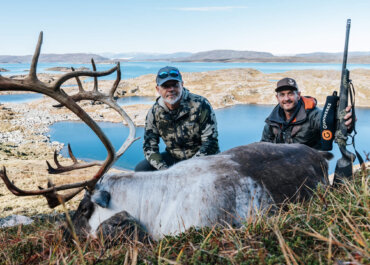Here at WTA, we book a pile of hunting and fishing trips each year, and it never fails that turkey hunts are one of our most popular offerings.
There is a myriad of reasons for the popularity of turkey hunting. Its another species to chase when the elk and deer have their spring/summer reprieve. The waterfowl boats, blinds and decoys are put away and the fishing rods just are not quite ready to come out yet. It is a very interactive hunt, great for beginners and great for kids, as they get to hear birds gobble, yelp, purr and cluck. Additionally, these hunts are attainable for the ‘everyday guy’ from an access and affordability standpoint. What I mean by that is there are turkey seemingly everywhere and even the highest priced outfitted turkey hunt is affordable by today’s hunt cost standards. Oh, and did I mention, it is just flat-out a bunch of fun to chase these dudes around! All of these things make turkey hunting very attractive, but probably the thing I hear the most is the fact that it is a “Slam” that is achievable for most. We assist many clients, with completing their Slam, whether it is the last leg of their journey or they need everything start-to-finish.
The three different Turkey Slams are as follows below:
- The Grand Slam – Which is the harvesting of the Eastern, Merriams, Osceola and Rio Grande sub species.
(I joke with guys a lot and tell them they are not finished until they come the Nebraska and harvest a hybrid, which depending on what part of the state you are in, could be a (Merriam/Rio) cross or (Eastern/Rio) cross. When you do that then you have the “Grander Slam”)
- Royal Slam – Which is the harvesting of your Grand Slam plus a Goulds turkey
- World Slam – Which is the harvesting of your Royal Slam plus an Ocellated turkey.
Here at WTA we have everything you need to get in the turkey woods and complete that Slam. Our turkey outfitters have probably been professionally vetted. There is an unbelievable amount of turkey knowledge sitting in this office, and no matter which Consultant you speak with, you will be very well taken care of. We cover everything from Easterns in the states of Kansas, Ohio, Indiana, Illinois, Iowa and Kentucky to Rios in Texas, Oklahoma and Kansas. We offer hunts for true Merriams in New Mexico, South Dakota, northwest Nebraska, Wyoming and Utah. Goulds in Sonora, Mexico, and through the draw in Arizona – and last but not least – the Ocellated turkey in the jungles of Campeche, Mexico.
Whether you are trying to do the full turkey hunt World Slam, or just want to book high-quality, single species over a long weekend – WTA can help. This is the time of year to start locking-in prime dates for 2020 and to look at last minute offers for the 2019 season. Give us a call today at 1-800-346-8747 and we will be glad to assist you.











